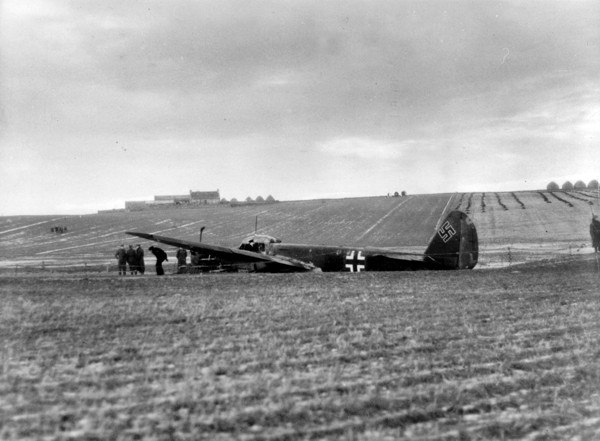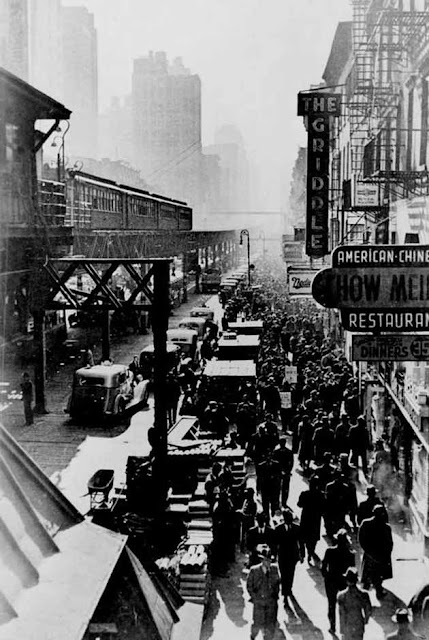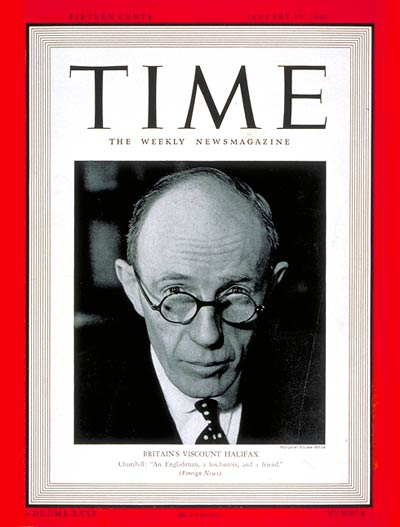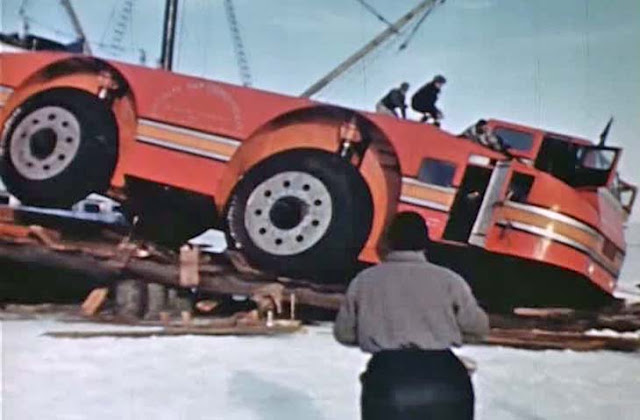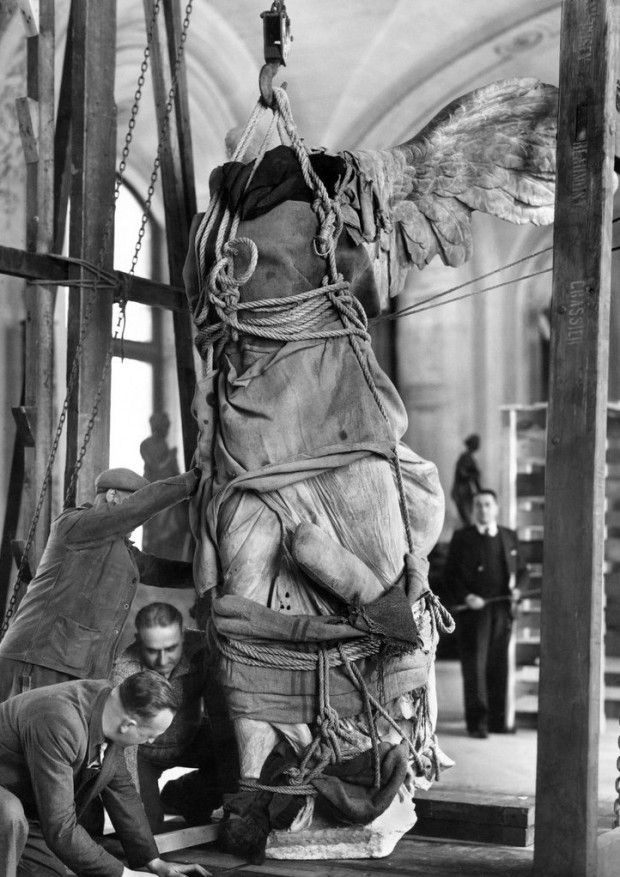Wednesday 20 August 1941
 |
| "'Mark', a dog ammunition carrier, delivers 'ammo' to a Bren gun team, Eastern Command, 20 August 1941." © IWM (H 12984). |
German OKW Chief Wilhelm Keitel notifies the Finnish high command (General Waldemar Erfuth) that he will be sending a plan for Finnish military involvement in the capture of Leningrad. Marshall Mannerheim, however, confides to Erfuth that he has no plans to make anything more than a token attack on Leningrad. Mannerheim has both political and military reasons to avoid an attack on the Soviet Union regardless of what the Germans want. When the German plan arrives, he says that he intends to say "No." This is not a unique attitude: already some Finnish troops on the Karelian Isthmus have balked at marching past pre-war borders. Mannerheim's consistent position throughout his career is that he has no intention of ever trying to invade Russia, he simply wants to recover territory to which he believes that Finland has historical claims. The Soviets, of course, consider all territory currently occupied by Soviet troops to be theirs regardless of such historical claims.
In the Far North sector, the Finns prepare an attack by IV Corps to capture Viipuri. The Soviet 43rd and 123rd Rifle Divisions are withdrawing in that direction already. The Finnish 18th Division of the II Corps, with the 12 Division and Light Brigade T (Colonel Tiiainen) crosses the Vuoksi River, and the Soviet 115th Rifle Division moves to block them. While the Finns are advancing steadily in the Karelian Isthmus, the terrain increasingly favors the Soviet defenders as the Isthmus grows narrower as the fighting approaches Leningrad.
The Finnish attack toward the Murmansk railway line at Loukhi is bogged down after offering much promise only a week ago. The Finnish high command sends a battalion from the force that has bogged down near Ukhta (Kalevala) to help out. As seems always to be the case in the Far North, the Soviets have moved just enough troops into position at Loukhi at the last minute to avoid losing truly strategic positions.
 |
| "A Gypsy tribe on the way to Lviv." 20 August 1941 (Hans Joachim Paris, Federal Archive, Bild 146-2004-0026) |
Elsewhere, the German 32 Corps (General Walter Kuntze) begins attacking Tallinn, Estonia. The Soviet forces there are surrounded, and their only hope of escape is by sea. Remnants of Soviet Marshal G.I. Kulik's 54th Army tries to escape through German lines north of Luga and are destroyed. German 41 Corps of Panzer Group 4 (General Reinhardt) and elements of the 18th Army isolate about 30,000 Soviet troops of the Soviet Luga Operational Group.
German troops south of Leningrad stage daring assaults that succeed due to sheer surprise and audacity. A unit of German 16th Army led by Sergeant Fege of the 45th Infantry Regiment cuts the Moscow-Leningrad rail line southeast of Chudovo by taking a railway bridge in a surprise attack before the Soviet defenders can blow it up. Other German troops led by Lieutenant-Colonel Matussik of the 2nd Battalion, 45h Infantry Regiment proceed further east in a captured truck and take another important railway bridge over the Volkhov River after finding it unguarded. These successes sever the last Soviet railway line from Leningrad to Moscow and solidify the German line - for the moment.
In the Army Group Center sector, both Panzer Group 2 (General Guderian) and the 2nd Army continue moving toward Bryansk. Soviet 24th Army continues the Soviet attacks against the German "lightning rod" position at Yelnya. The German defenders at Yelnya are holding their position but report that they have lost about 1000 men in the last six days.
 |
| Royal Castle in Warsaw in 1941. The Germans have removed the roof to hasten the process of destruction by the elements (Zamek Królewski w Warszawie, red. A. Gieysztor, 1972). |
In a top-secret mission, Soviet NKVD troops under Boris Epov and Aleksandr Petrovsky, sent specially from Moscow on personal orders from Stalin, blow up the Lenin-Dnieproges Dam at Zaporizhzhia (Zaporizhzhya). The resulting water surge kills an estimated 20,000-100,000 Ukrainians. The dam had the largest statue of Vladimir Lenin in Ukraine. The flow of water temporarily cuts off part of the city of Zaporizhzhya from the advancing Wehrmacht. The dam's destruction is filmed, perhaps to prove to Stalin that it had been done as ordered.
The Red Air Force sends nine bombers to attack Berlin.
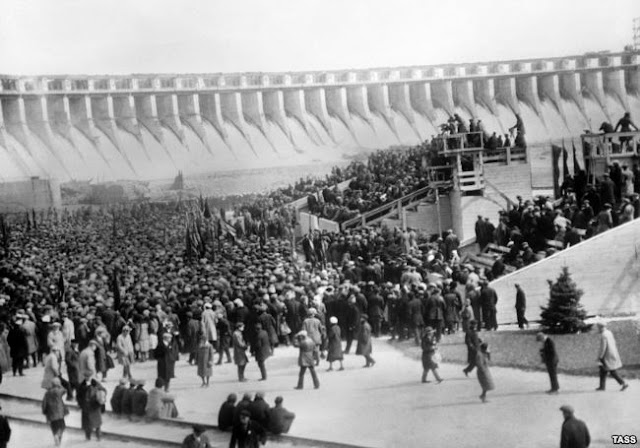 |
| The Dnieper hydroelectric station on October 10, 1932, when it was put into service. After its destruction on 20 August 1941, the dam was later repaired and remains in service today. |
Battle of the Baltic: Soviet minesweeper Buy hits two mines and sinks in the Baltic Sea off Hogland.
German torpedo boat S-58 torpedoes and sinks Soviet minesweeper Pirmunas in the Väinameri Sea (Gulf of Riga).
Soviet reefer Sibir is lost today of unknown causes.
 |
| Canadian destroyer HMCS St. Laurent (H83) (originally HMS Cygnet), 20 August 1941 (Canadian Navy Heritage website. Image Negative Number IKMD-04199, Ken Macpherson / Naval Museum of Alberta). |
Faroes 236-ton auxiliary trawler Solarris hits a mine and sinks off Seydisfjordur (Seidisfjord), Iceland. There are four survivors.
Royal Navy 348-ton minesweeping trawler HMT Lorinda sinks due to a fire caused by engine trouble off Freetown. Everyone survives, picked up by accompanying trawler Balta.
The German 4th S-Boat Flotilla (Kptlt. Bätge) attacks a routine British convoy off Cromer. S-48 (ObltzS v. Mirbach) torpedoes and sinks 1971-ton Polish freighter Czestochowa (one dead). S-48 also badly damages 2774-ton British freighter Dalewood. There are four deaths. A tug tows Dalewood into the Humber with major damage aft.
German 200-ton trawler Charlotte is stranded and lost in the North Sea.
Mexican Navy patrol boat Halcon sinks of unknown causes.
Royal Navy battleship HMS Duke of York (Captain C.H.J. Harcourt) receives its final touches and is fully ready for battle.
Royal Navy Commander-in-Chief, Home Fleet Admiral Sir John Tovey visits Scapa Flow on an inspection tour.
Convoy ON-9 departs from Liverpool.
Royal Navy minesweeper HMS Ilfracombe (J-95, Lt. Commander Harry L. D. Hoare) is commissioned.
U-591 and U-592 are launched.
Royal Navy submarine Upholder torpedoes and sinks 852-ton Italian freighter Enotria six miles northwest of Cape St Vito, northwest Sicily.
Royal Navy submarine Thrasher uses its deck guns to sink a small Greek freighter, the San Stefano, off Cape Malea.
Italian S-79 torpedo bombers under the command of Captain Buscaglia hit and damage 4782-ton British tanker Turbo north of Damietta, Egypt. The tanker is taken under tow to Port Said. Everyone survives, but Turbo is in very bad shape. On 4 April 1942, when an attempt is made to tow the Turbo to Aden for repairs, the tanker breaks in half and sinks.
Operation Treacle, the replacement of Australian troops at Tobruk, continues with a small convoy departing from Alexandria. It consists of minelaying cruiser Latona and destroyers Kipling, Nizam, and Kingston carrying Polish troops of the Carpathian Brigade while escorted by light cruisers Ajax and Neptune. During the withdrawal from Tobruk, destroyer Nizam is damaged by a near miss from a Luftwaffe attack off Bardia but makes it back to Alexandria, partially in tow.
Royal Navy submarine Otus arrives at Malta carrying supplies from Alexandria. Its cargo includes 18 passengers.
The British military command at Malta warns homeowners to remove inflammable items from roofs. It is a quiet day with no air attacks. RAF bombers attack Augusta, Sicily.
 |
| Obertsleutnant Helmuth Groscurth, 1941/1942 (Federal Archive, Bild 146-1997-017-20). |
In the case in question, measures against women and children were undertaken which in no way differ from atrocities carried out by the enemy about which the troops are continually being informedThe commander of the Sixth Army, Field Marshal Walter von Reichenau reads the report and characterizes it as:
incorrect, inappropriate and impertinent in the extreme.Reichenau personally orders the children killed and sends a representative, SS-Obersturmfuhrer August Hafner, to the division to make sure that the order is carried out - which it is on 21 August. Hafner writes that, when he arrives, the German troops already have dug a grave in the woods. Following normal procedure, the children are lined up along the edge of the pit and shot so that they fall into it. Local Ukrainians, no doubt including some relatives of the children, are made to watch.
Incidents like these belie later claims that ordinary German Army units did not participate in exterminations on the Eastern Front and that only SS units carried them out. Evidence shows that this and similar incidents badly affected the morale of ordinary German soldiers such as Groscurth. Naturally, the Soviets also learned of such incidents, with predictable consequences.
On the Yugoslavian island of Pag, Italian troops that arrive to occupy the island find evidence of mass murders of Serbians and Jews by local Ustachi fascists. A total of 293 women, 91 children, and 791 bodies overall are found.
 |
| A German train in Serbia destroyed by Serbian partisans, 1941. |
Propaganda: Italian radio claims "a particularly daring attack was carried out on Malta" on 19 August. The attacking aircraft "machine-gunned the highly equipped airbase of Hal Far" and "Two large twin-engined bombers were set on fire and destroyed, while another two bombers and two single-engine planes were hit and rendered unserviceable."
US/Japanese Relations: Ambassador Nomura reports to Tokyo that President Roosevelt is not "anti-Japanese." However, Postmaster-General Walker has indicated that any talk of a summit between the leaders of Japan and the US would encounter very strong opposition from both Congress and the public. Walker, Nomura writes, feels there is a good possibility of peace if talks continue.
 |
| "Astounding Science-Fiction," Volume 27 #6, August 1941, John W. Campbell, Jr. Editor, cover painting by Hubert Rogers. |
The Spanish "Blue" Division (250th Division) begins moving to the Front south of Leningrad.
Japanese Military: The Imperial Japanese Navy requisitions 9997-ton tanker Toho Maru and assigns it to the Yokosuka Naval District.
Battleship Haruna joins the Japanese First Fleet (Vice Admiral Takasu Shiro), joining Battleship Division 3 (Vice Admiral Mikawa Gunichi). This powerful force already includes battleships Hiei, Kirishima, and Kongo.
Submarine chasers CH-20 and CH-21 are completed and join the Kure Naval District.
US Government: The Department of Agriculture announces that it is negotiating with the governments of Argentina, Australia, Canada, and Britain to create an "international granary" in the United States. Surplus food from participating countries is to be accumulated in the United States for distribution wherever needed when the war is over - though, of course, the US is not at war. Yet. In the meantime, the United States already has a stockpile of 400 million bushels of wheat that is increasing with each harvest.
 |
| Erich Koch (Federal Archives, Bild 183-H13717). |
Iraq: The new pro-British government announces that it is reopening the military academy in Baghdad.
Costa Rica: The French Charge d'Affaires and the Secretary of the French Legation switch sides, submitting their resignations to the Vichy government and accepting identical positions in the Free French movement.
 |
| "Jewish refugee children wait to board SS Mouzinho in Lisbon.” August 20, 1941. United States Holocaust Memorial Museum, a gift of Milton Koch. |
German Homefront: Adolf Hitler asks his personal architect, Albert Speer, who at this time has no formal role in the war, to use captured Soviet booty to decorate Berlin buildings to build morale.
French Homefront: Due to recent attacks on the French railway system, the Vichy government arrests 50,000 people for questioning.
British Homefront: Former Governor-General of Australia (1925-1930) John Baird, 1st Viscount Stonehaven dies peacefully at his home in Ury House, Stonehaven, Aberdeenshire, UK.
 |
| Marshals Stalin and Voroshilov (right) at the 1945 Victory Parade in Moscow. |
With the situation on the Leningrad front grim, Marshal Kliment Voroshilov attends the first meeting of the Leningrad "aktiv" (Council for the Defense of Leningrad). He and Andrei Zhdanov, the local Communist leader, craft an appeal for release to the press, the famous "Appeal to the People of Leningrad." It is also signed by Pyotr Popkov, chairman of the Leningrad Soviet. It calls for the citizens of Leningrad to stand up and fight the approaching Wehrmacht. The Appeal is released on the 21st.
American Homefront: A strike in the Federal Shipbuilding Company's yards in Jersey City, New Jersey which began on 7 August continues. President Roosevelt asks the 18,000 striking men who are working on $493 million worth of war and merchant ship orders to return to work within a fortnight. Roosevelt asks the strikers to put "the importance of national defense before their points of difference."
A transportation strike in Detroit is hindering defense industries there.
 |
| Admiral Richard Evelyn Byrd circa 1930. |
The President has been accused of trying to get this nation into war. I can give you my personal word that Roosevelt, the man, has a deep hatred for war—deeper perhaps than many who have made this criticism. Roosevelt, the President, has the task of carrying American democracy forward under God against any resistance, and it is his duty to do that above all things. If he can do it without war he will do it. But there are things infinitely worse than war, and the worst of these is slavery.Byrd concludes by asking, "are we going to stand united behind the President as if at war with unconquerable morale? Americans, what is your answer?"
Future History: Slobodan Milošević is born in Požarevac village in Podgorica (Požarevac), Yugoslavia. He becomes President of the Federal Republic of Yugoslavia. He is arrested by Yugoslav federal authorities on 31 March 2001 on suspicion of corruption, abuse of power, and embezzlement. Milošević dies in prison of a heart attack on 8 May 1989.
Samuel Goldwyn Company gives "The Little Foxes," starring Bette Davis, its world premiere today at Radio City Music Hall in New York City. The film earns 9 Academy Award nominations but does not win any because among other competitors it is up against "Sergeant York," "How Green Was My Valley," "Citizen Kane," "Here Comes Mr. Jordan," and other renowned films. This sets a new mark for futility which stands for decades, until "The Turning Point" (1977) with 11 nominations and no wins.
August 1941
August 2, 1941: Uman Encirclement Closes
August 3, 1941: Bishop von Galen Denounces Euthanasia
August 4, 1941: Hitler at the Front
August 5, 1941: Soviets Surrender at Smolensk
August 6, 1941: U-Boats in the Arctic
August 7, 1941: Soviets Bomb Berlin
August 8, 1941: Uman Pocket Captured
August 9, 1941: Atlantic Conference at Placentia Bay
August 10, 1941: Soviet Bombers Mauled Over Berlin
August 11, 1941: Rita Hayworth in Life
August 12, 1941: Atlantic Charter Announced
August 13, 1941: The Soybean Car
August 14, 1941: The Anders Army Formed
August 15, 1941: Himmler at Minsk
August 16, 1941: Stalin's Order No. 270
August 17, 1941: Germans in Novgorod
August 18, 1941: Lili Marleen
August 19, 1941: Convoy OG-71 Destruction
August 20, 1941: Siege of Leningrad Begins
August 21, 1941: Stalin Enraged
August 22, 1941: Germans Take Cherkassy
August 23, 1941: Go to Kiev
August 24, 1941: Finns Surround Viipuri
August 25, 1941: Iran Invaded
August 26, 1941: The Bridge Over the Desna
August 27, 1941: Soviets Evacuate Tallinn
August 28, 1941: Evacuating Soviets Savaged
August 29, 1941: Finns take Viipuri
August 30, 1941: Operation Acid
August 31, 1941: Mannerheim Says No
2020


